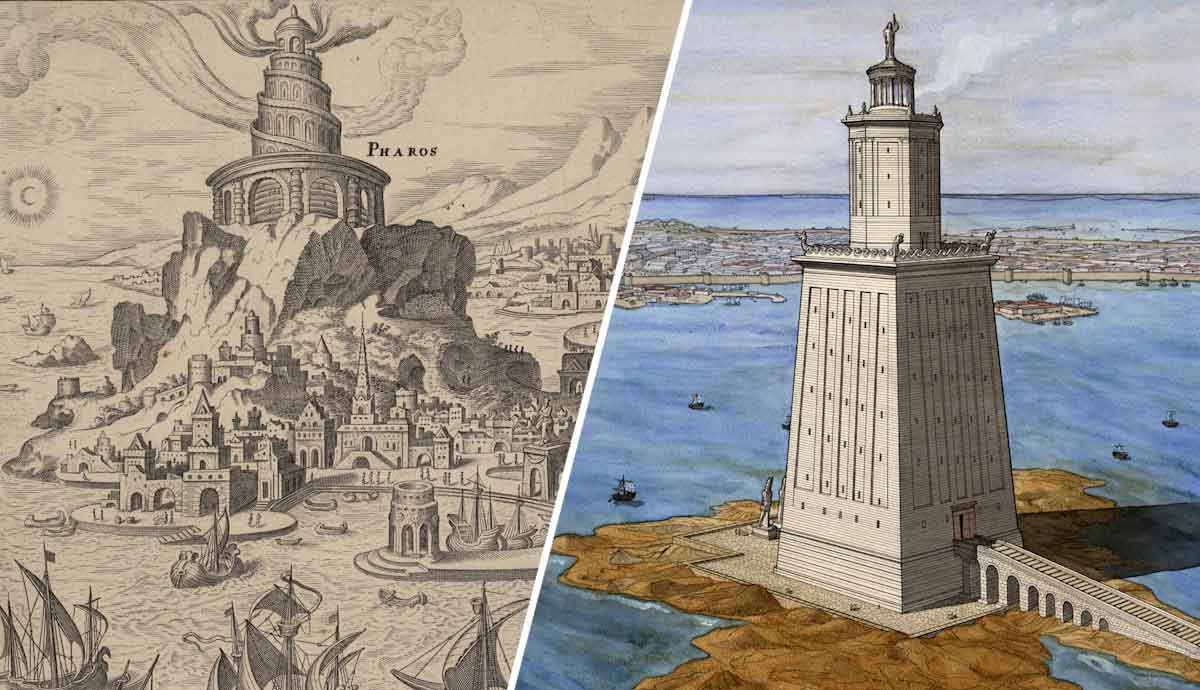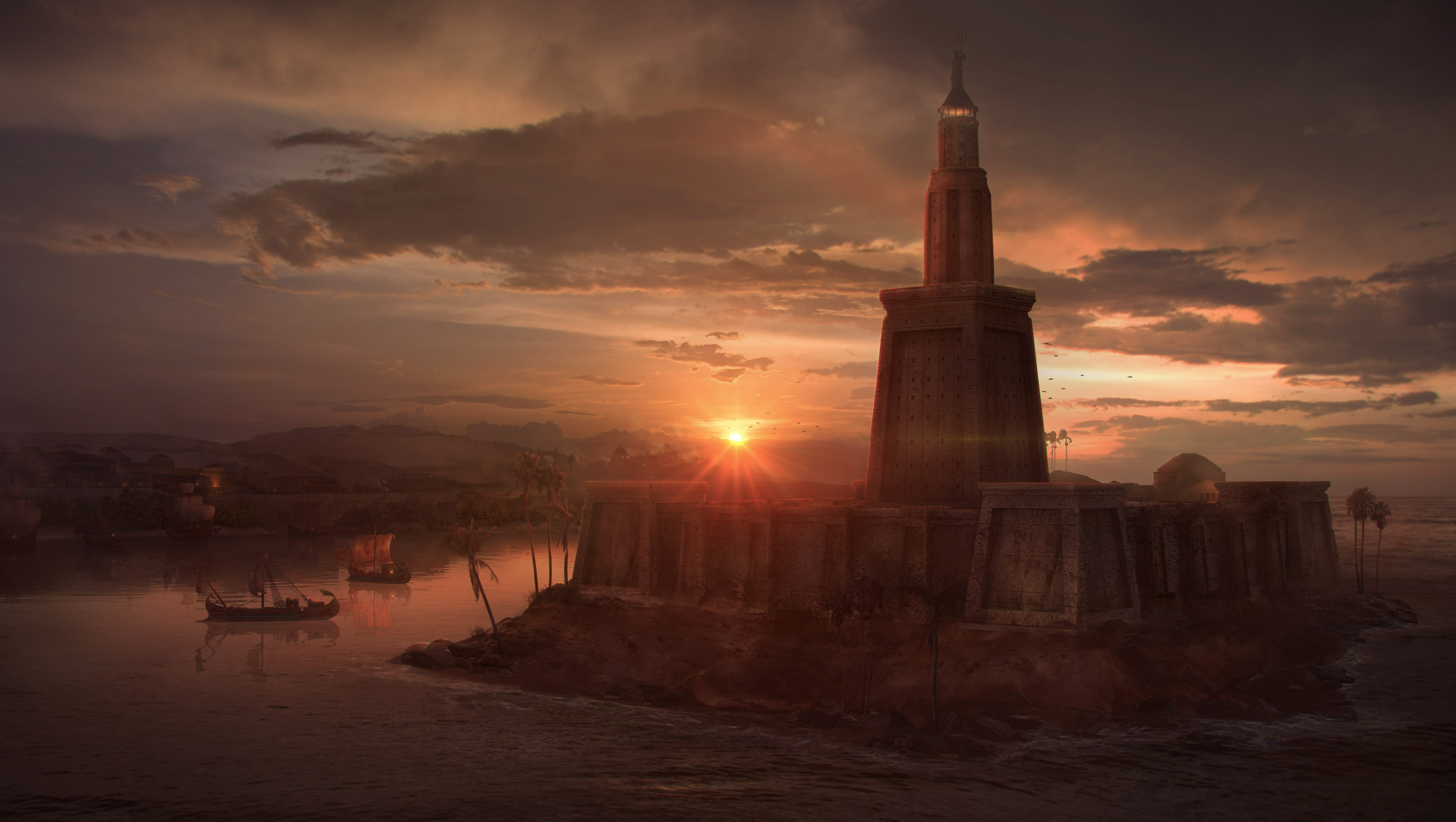The Mystery Of The Lighthouse Of Alexandria
The Lighthouse of Alexandria: A Beacon of Ancient Engineering Brilliance
Introduction:
The Lighthouse of Alexandria, also known as the Pharos of Alexandria, stands as one of the most iconic and enduring symbols of ancient engineering prowess. Located on the island of Pharos just off the coast of the city of Alexandria in Egypt, this majestic structure served as a guiding beacon for sailors navigating the treacherous waters of the Mediterranean Sea. Spanning centuries, the lighthouse not only illuminated the way for mariners but also represented the advancement of ancient civilization in architecture, engineering, and maritime navigation.
Historical Background:
The origins of the Lighthouse of Alexandria can be traced back to the reign of Ptolemy II Philadelphus, a Hellenistic ruler of Egypt, in the 3rd century BCE. Historians believe that the idea for such a monumental structure was conceived by Sostratus of Cnidus, a renowned architect of the time. Construction began around 290 BCE and was completed under the supervision of Sostratus' son, Ptolemy, in approximately 280 BCE. The lighthouse was built from large blocks of limestone and stood at an impressive height of around 100 to 120 meters (330 to 390 feet), making it one of the tallest man-made structures of its time.
Architectural Design:
The design of the Lighthouse of Alexandria was a testament to ancient engineering ingenuity. The structure consisted of three main tiers: a square base, a middle octagonal section, and a cylindrical tower at the top. Atop the tower sat a large bronze mirror or a flame that emitted a powerful light visible from afar. The exterior of the lighthouse was adorned with intricate carvings and statues, adding to its grandeur and splendor. Its strategic location on the island of Pharos ensured maximum visibility for passing ships, guiding them safely to the harbor of Alexandria.
Function and Significance:
As a functioning lighthouse, the Pharos of Alexandria played a crucial role in maritime navigation during antiquity. Its beacon provided a vital reference point for sailors traveling along the Mediterranean trade routes, helping them avoid dangerous shoals and navigate safely to the bustling port of Alexandria. Additionally, the lighthouse served as a symbol of the city's prosperity and power, showcasing the wealth and technological prowess of the Ptolemaic dynasty. Its reputation as one of the Seven Wonders of the Ancient World further solidified its legendary status in history.
Legacy and Influence:
Although the Lighthouse of Alexandria met its demise due to a series of earthquakes in the 14th century CE, its legacy continues to inspire awe and admiration to this day. The iconic structure has captured the imagination of scholars, architects, and historians for centuries, serving as a symbol of human innovation and achievement. The Pharos of Alexandria remains a potent reminder of the heights of architectural and engineering excellence reached by ancient civilizations, leaving an indelible mark on the annals of history.
Conclusion:
The Lighthouse of Alexandria stands as a timeless testament to the brilliance of ancient engineering and the enduring spirit of human ingenuity. From its majestic design to its vital function in guiding maritime traffic, this iconic structure remains a symbol of innovation and progress. Though its physical presence may have been lost to the ravages of time, its legacy continues to shine brightly, illuminating the path for future generations to marvel at the wonders of the past.
Unraveling the Impact: The Great Earthquake of Crete
Introduction:
Natural disasters have long been a part of human history, shaping landscapes, communities, and cultures. Among the most devastating of these phenomena are earthquakes, which can unleash destruction of unparalleled magnitude. One such event that left an indelible mark on history is the Great Earthquake of Crete. Striking the island of Crete in the eastern Mediterranean, this seismic catastrophe wreaked havoc on the region, altering lives and landscapes in its wake.
Historical Context:
The Great Earthquake of Crete occurred on July 21, 365 CE, during the late Roman Empire. Crete, situated at the crossroads of several tectonic plates, is particularly prone to seismic activity. The earthquake is believed to have had a magnitude exceeding 8.0 on the Richter scale, making it one of the most powerful earthquakes in recorded history. Its effects were felt across the Mediterranean basin, causing widespread devastation in Crete and beyond.
Impact on Crete:
The earthquake unleashed a barrage of destructive forces upon the island of Crete, laying waste to cities, towns, and villages. Historical accounts describe entire settlements being reduced to rubble, with countless lives lost in the chaos. The city of Gortyn, then a prominent urban center on the island, suffered extensive damage, including the collapse of its famed Roman structures and infrastructure. The ancient capital of Knossos, renowned for its Minoan palaces, also bore the brunt of the earthquake's fury, further adding to the region's devastation.
Human Toll:
The human toll of the Great Earthquake of Crete was staggering, with thousands perishing in the catastrophe. Survivors faced untold hardships as they struggled to cope with the aftermath, grappling with injuries, displacement, and the loss of loved ones. Communities were fractured, livelihoods were destroyed, and the social fabric of Crete was profoundly altered. The earthquake left an indelible scar on the collective memory of the island's inhabitants, shaping their resilience and fortitude in the face of adversity.
Cultural and Historical Significance:
Beyond its immediate devastation, the Great Earthquake of Crete holds significant cultural and historical importance. The seismic event precipitated widespread changes in the region, influencing architectural styles, urban planning, and societal norms. In its aftermath, Crete experienced a period of reconstruction and renewal, marked by the emergence of new building techniques and seismic-resistant structures. The earthquake also served as a catalyst for religious and philosophical reflection, prompting questions about the nature of suffering and the divine order.
Legacy and Lessons Learned:
The legacy of the Great Earthquake of Crete endures to this day, serving as a sobering reminder of the unpredictable power of nature. It underscores the importance of preparedness, resilience, and community solidarity in mitigating the impact of natural disasters. Archaeological studies of the earthquake's aftermath have provided valuable insights into ancient seismic activity and its effects on human civilization. Moreover, the resilience displayed by the people of Crete in the wake of adversity serves as an enduring testament to the human spirit's capacity to endure and rebuild.
Conclusion:
The Great Earthquake of Crete stands as a pivotal moment in the island's history, leaving an indelible imprint on its landscape and people. Though centuries have passed since the cataclysmic event, its memory lives on in the annals of history, a testament to the enduring legacy of natural disasters. As we reflect on the lessons learned from the earthquake, we are reminded of the fragility of human existence and the imperative of solidarity in confronting the challenges of an unpredictable world.




































